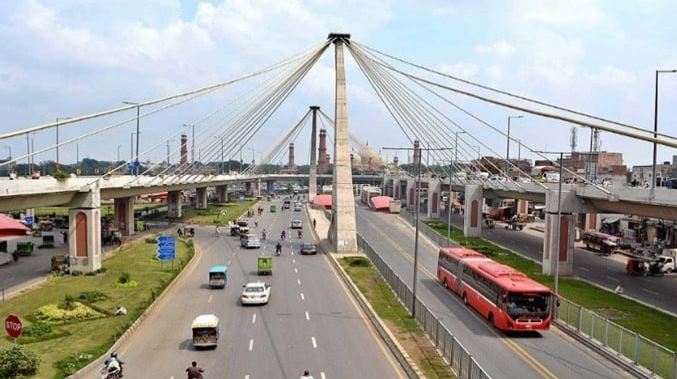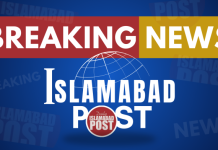More than one-third of all energy consumption in Pakistan can be attributed to the transportation segment, covering motorcycles, automobiles, trucks, etc.
Pakistan’s biggest import for the last many years is oil and associated petroleum products. Any sharp rise in oil prices eventually leads to a crisis in Pakistan, as higher oil prices translate into an expanding current account deficit, a depreciating rupee, and eventually higher inflation.
In the first round of inflationary impact, the price of petroleum products increases which bumps up inflation. In the second round of inflationary impact, prices of other goods in the economy increase, as the rupee also depreciates, and businesses incorporate the higher cost of fuel in product prices.
As inflationary effects start to settle, another round of oil price shocks reverberates through the economy again — further fueling inflation like clockwork.
Over the last five years, Pakistan has imported more than $73 billion in fuel, making up 28% of total imports. Despite increasing import bills, per capita consumption remains largely unchanged given the increase in population.
This implies that due to the increase in prices, affordability has also gone down, resulting in flat consumption of energy, and largely muted economic growth.
It is estimated that there are more than four million cars in Pakistan and more than 24 million motorcycles. Almost 40% of all fuel consumed in the country is effectively in motorcycles.
Similarly, the movement of goods in the country is primarily through diesel-powered trucks, rather than more scalable and fuel-efficient solutions, such as railways.
The movement of people and goods essentially consumes a significant quantity of our total oil imports – making its consumption relatively inelastic. As the price of oil increases, disposable incomes after adjusting for fuel expenses also decline, leaving fewer resources for reallocation to other essentials.
A pro-people energy policy would focus on improving the affordability of transport, enabling access to transport more equitable, while striving to reduce the energy intensity of the economy.
The core objective ought to be to reduce reliance on imported fuels, while also improving affordability and making transportation more efficient.
Productivity gains and their contribution to the GDP can only be realised through improved efficiency. There exists a strong case for aggressively rolling out public transportation options across the country. Over the last few years, there have been a few projects, but a lot more needs to be done.
As an example, the Karachi Green Line, which is a massive infrastructure project serving more than one million commuters on a monthly basis was established at a cost of Rs35 billion.
Meanwhile, the fuel subsidy that was given in 2022, which wrecked the economy, cost the national exchequer more than Rs450 billion. Effectively, this subsidy could have potentially funded dozens of large-scale public transportation infrastructure projects across the county.
These projects would not have just increased mobility of people, but also improved affordability of transport and reduced reliance on oil imports.
The country needs a public transportation emergency that not just improves efficiency, but also reduces reliance on imported oil while improving disposable income for households.
The federal and provincial governments need to roll out public-private partnership schemes for public transportation infrastructure through a reverse dutch-auction process, with the government eventually becoming an enabler to support the growth of public transportation rather than a capital provider.
The transition away from imported oil is largely a policy issue, rather than a capital issue. The government can crowd in private capital and enable the development of transportation infrastructure, eventually phasing out private consumption of oil with more efficient public consumption.
In addition to a transition towards public transportation, it is important for the government to have a forward-looking outlook. Oil is a fuel of the past; it is electricity that will drive transportation in the future.
There is a strong case to set ambitious targets to phase out petrol and diesel-powered cars with electric cars.
The government can essentially mandate that by a certain targeted date, any new cars sold need to be electric cars, thereby encouraging investment in automobile manufacturing facilities for this.
In parallel, the existing network of petrol stations can gradually transition towards electric charging stations.
Moreover, the public transportation emergency can simply mandate the usage of only electricity buses for public transportation as the lowest-hanging fruit in accelerating the transition away from imported oil.
It is essential to note that Pakistan has surplus electricity generation capacity, and more capacity is under construction to be added over the next few years.
Moreover, Pakistan’s electricity generation mix is skewed towards more local indigenous sources, including hydro, nuclear, and Thar coal.
It is possible to generate greater quantities of electricity through indigenous sources, such that it can electrify our automobile and transportation infrastructure. Through such a maneuver, it will be possible to wean off dependence on consumption of imported oil, while increasing reliance on indigenous resources.
A key blocker here is a horribly inefficient electricity transmission and distribution infrastructure which leads to significant line losses and high costs for the consumer.
Fixing the energy puzzle also requires reforming the transmission and distribution infrastructure – without which it may be impossible to achieve any productivity gains through efficiency.
A trade imbalance cannot be fixed till we fix reliance on imported oil for transportation purposes, which effectively drives consumption.
A pro-people policy would aggressively roll out public transportation, and electrification of transport while reforming the transportation and distribution network.
More than five years of flat growth continues to erode the real incomes of people, and it is time that necessary efficiency gains are also realised, while spurring an increase in overall real incomes.
A transition towards an electrified transportation regime, heavily reliant on public transportation infrastructure will not only improve overall household economics and purchasing power but also reduce external deficits and keep inflation under check.
We can either make policies for the future and for the betterment of the people of this country, or we can continue using fuel belonging to the last century, and keep transferring household wealth to oil-exporting countries.

















